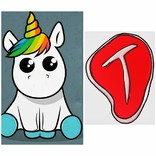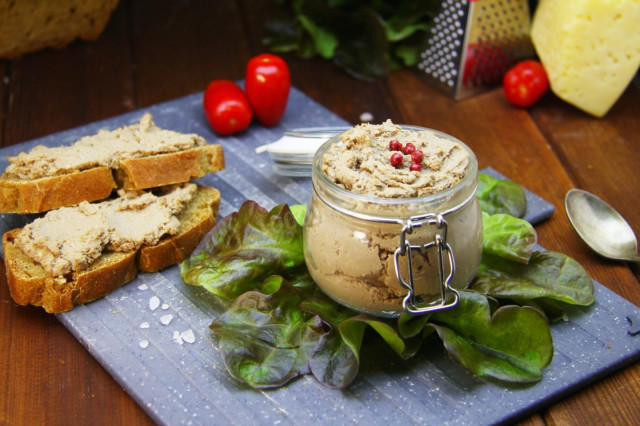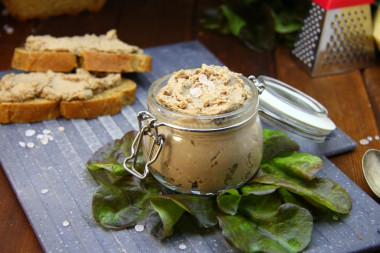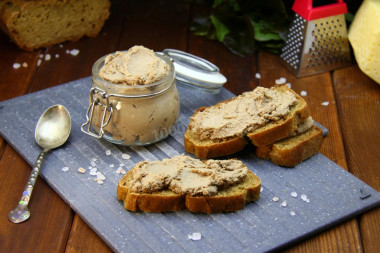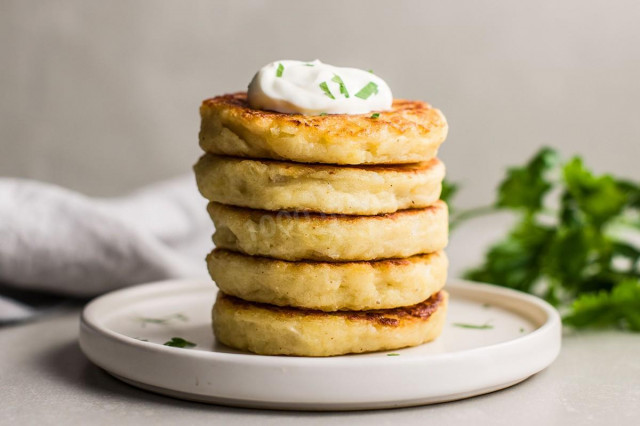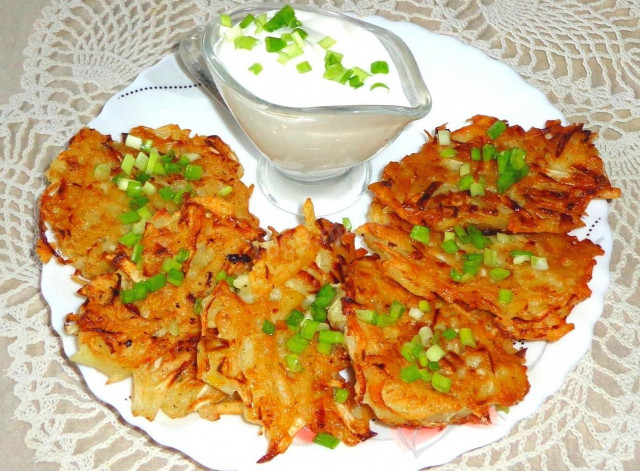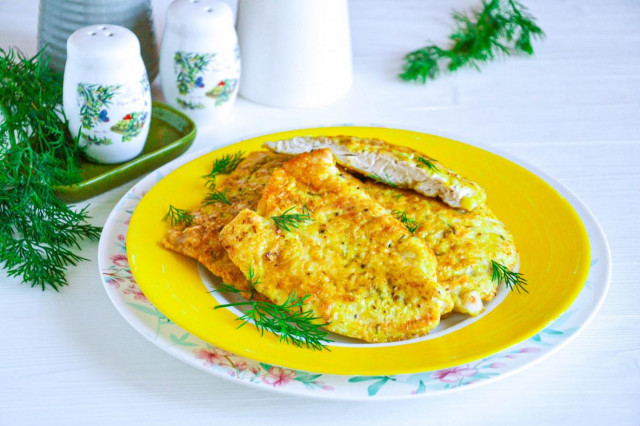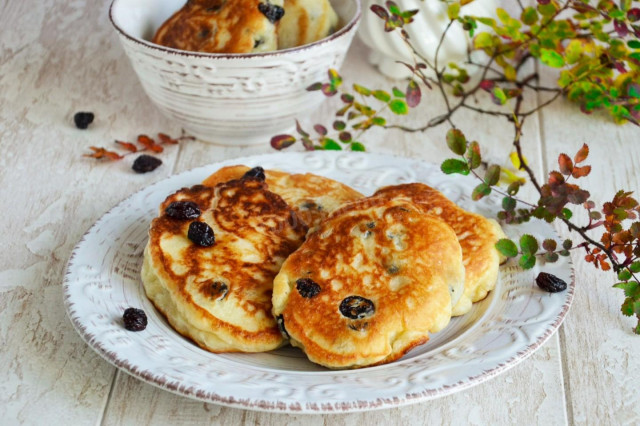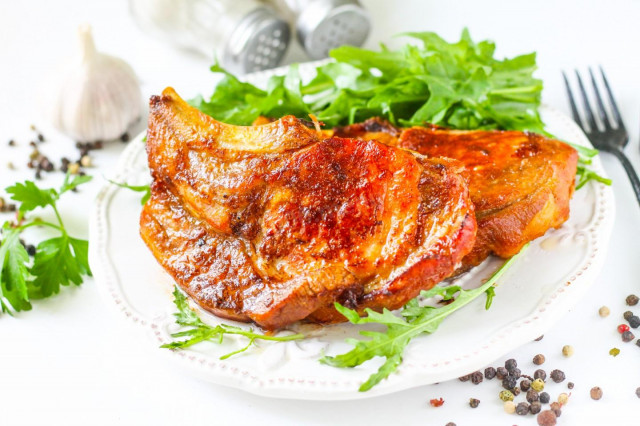Composition / ingredients
Step-by-step cooking
Step 1:
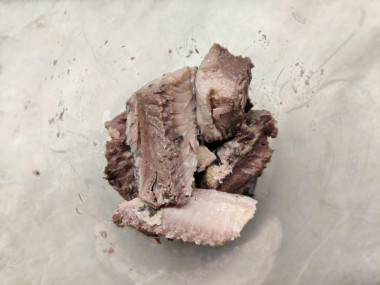
First you need to transfer the canned tuna meat into a tall glass blender. The broth from under the fish should not be poured out yet. It will be needed in the future to give the pate the necessary consistency.
Step 2:
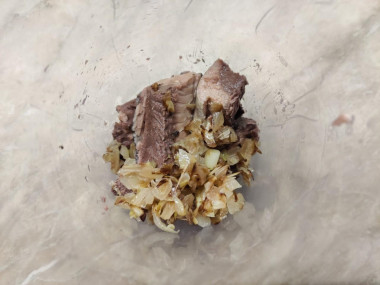
Peel and finely chop the onion. Fry in oil until tender. Transfer the onion to a blender glass.
Step 3:
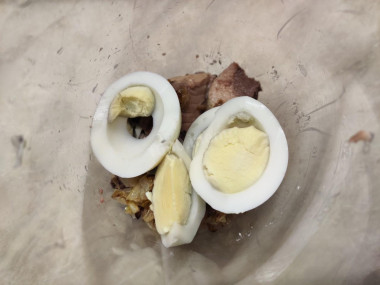
Peel the egg from the shell and cut it into several parts so that it is convenient to work with a blender. Transfer the egg to a blender glass.
Step 4:
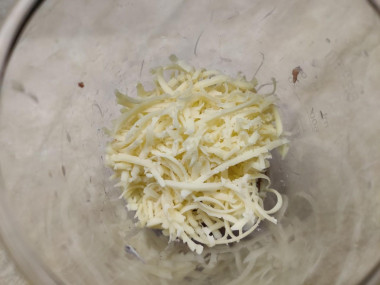
Grate the cheese on a fine grater. Add to other products. Add salt and pepper to the future pate to taste. Add three to four tablespoons of broth from a tuna can. This will allow the pate not to be dry. It is difficult to specify the exact amount of broth here, you need to take it by eye, since tuna is different for everyone. I added four tablespoons.
Step 5:
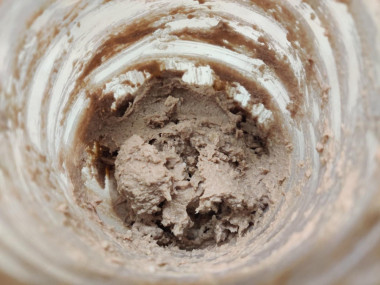
Using the nozzle of an immersion blender, thoroughly grind all the ingredients to a homogeneous, thick mass.
I got a very pleasant-tasting pate. The only thing is, since I love onions (and, in particular, fried), next time I will add it twice as much. This time, of course, it was felt, but somehow quite intelligent… Personally, I didn't have enough.
You can also experiment and try adding pickled cucumbers to the pate. I can't say how it will look in terms of color, but I think it will taste very good. Fresh dill will also be suitable here as an addition.
This time I fell for the trick of an unscrupulous canned food manufacturer. On the bank it was indicated: "Chunks of tuna." And a wonderful, pink fillet is drawn. And in fact, there were whole pieces of fish with a spine and bones in the jar... I had to get rid of both. A trifle, but unpleasant. So be careful when choosing canned fish.
It is best to choose tuna meat that has already been specially prepared for salads. Without bones.
Canned tuna pate can be stored in the refrigerator for up to two days.
I wish you bon appetit!
Caloric content of the products possible in the composition of the dish
- Chicken egg - 157 kcal/100g
- Egg white - 45 kcal/100g
- Egg powder - 542 kcal/100g
- Egg yolk - 352 kcal/100g
- Ostrich egg - 118 kcal/100g
- Dutch cheese - 352 kcal/100g
- Swiss cheese - 335 kcal/100g
- Russian cheese - 366 kcal/100g
- Kostroma cheese - 345 kcal/100g
- Yaroslavsky cheese - 361 kcal/100g
- Altai cheese 50% fat content - 356 kcal/100g
- Soviet cheese - 400 kcal/100g
- Cheese "steppe" - 362 kcal/100g
- Uglich cheese - 347 kcal/100g
- Poshekhonsky cheese - 350 kcal/100g
- Lambert cheese - 377 kcal/100g
- Appnzeller cheese with 50% fat content - 400 kcal/100g
- Chester cheese with 50% fat content - 363 kcal/100g
- Edamer cheese with 40% fat content - 340 kcal/100g
- Cheese with mushrooms of 50% fat content - 395 kcal/100g
- Emmental cheese with 45% fat content - 420 kcal/100g
- Gouda cheese with 45% fat content - 356 kcal/100g
- Aiadeus cheese - 364 kcal/100g
- Dom blanc cheese (semi-hard) - 360 kcal/100g
- Cheese "lo spalmino" - 61 kcal/100g
- Cheese "etorki" (sheep, hard) - 401 kcal/100g
- White cheese - 100 kcal/100g
- Fat yellow cheese - 260 kcal/100g
- Altai cheese - 355 kcal/100g
- Kaunas cheese - 355 kcal/100g
- Latvian cheese - 316 kcal/100g
- Limburger cheese - 327 kcal/100g
- Lithuanian cheese - 250 kcal/100g
- Lake cheese - 350 kcal/100g
- Gruyere cheese - 396 kcal/100g
- Vegetable oil - 873 kcal/100g
- Salt - 0 kcal/100g
- Onion - 41 kcal/100g
- Ground hot pepper - 21 kcal/100g
- Canned tuna in its own juice - 96 kcal/100g
